Tom's Guide Verdict
Like Artifact Uprising, Minted uses fine-quality, thick paper and stylishly designed templates, but its software is limited with no opportunity for personal creativity. If you want a beautiful (though pricey) calendar, check out Minted's. But for cards, Artifact Uprising's offers similar elegance for less money. And if you want to let loose your personal creativity on attractive (though not elegant) print products with lovely photos, go with Mixbook, for less money.
Pros
- +
Elegant, high-quality printed products
- +
Stylish, artistic templates
- +
Quick workflow
Cons
- -
Software restricts personalized creativity
- -
Rigid, non-customizable templates
- -
Expensive
Why you can trust Tom's Guide
Minted's original specialty was printed invitations and related paper paraphernalia for weddings. While it has branched out with photo calendars, invitations and stationery for various occasions and gifts, it has retained its emphasis on traditional elegance, as opposed to personal creativity. Therefore, Minted's closest competitor is Artifact Uprising rather than the more flexible, creative sites like Printique and Mixbook, our favorite services for producing the best photo cards and photo calendars.
| Row 0 - Cell 0 | Overall product rating | Software rating | Printed product rating |
| Calendar | 3 | 2.5 | 3.5 |
| Card | 3.5 | 2.5 | 4 |
What I liked
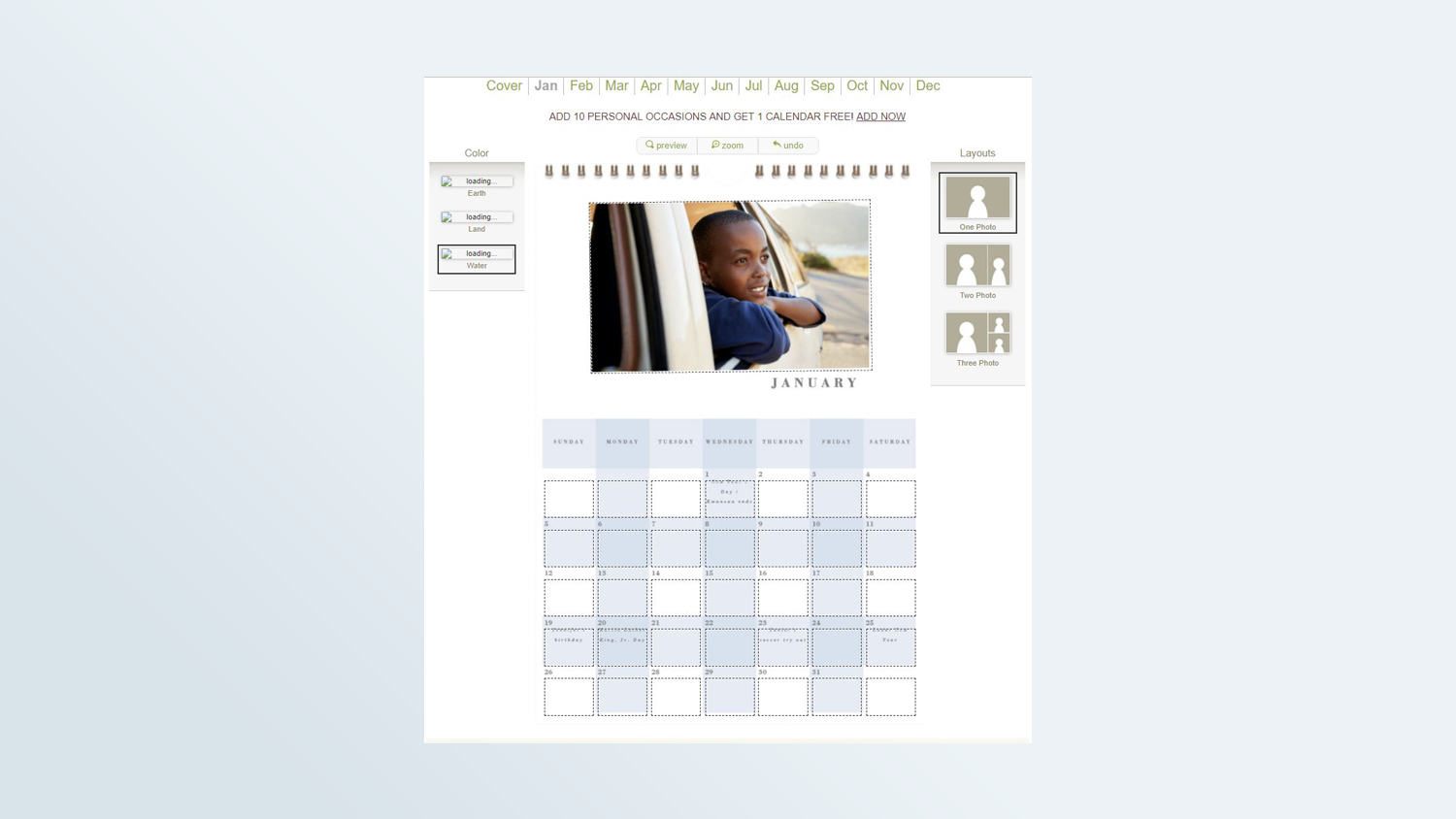

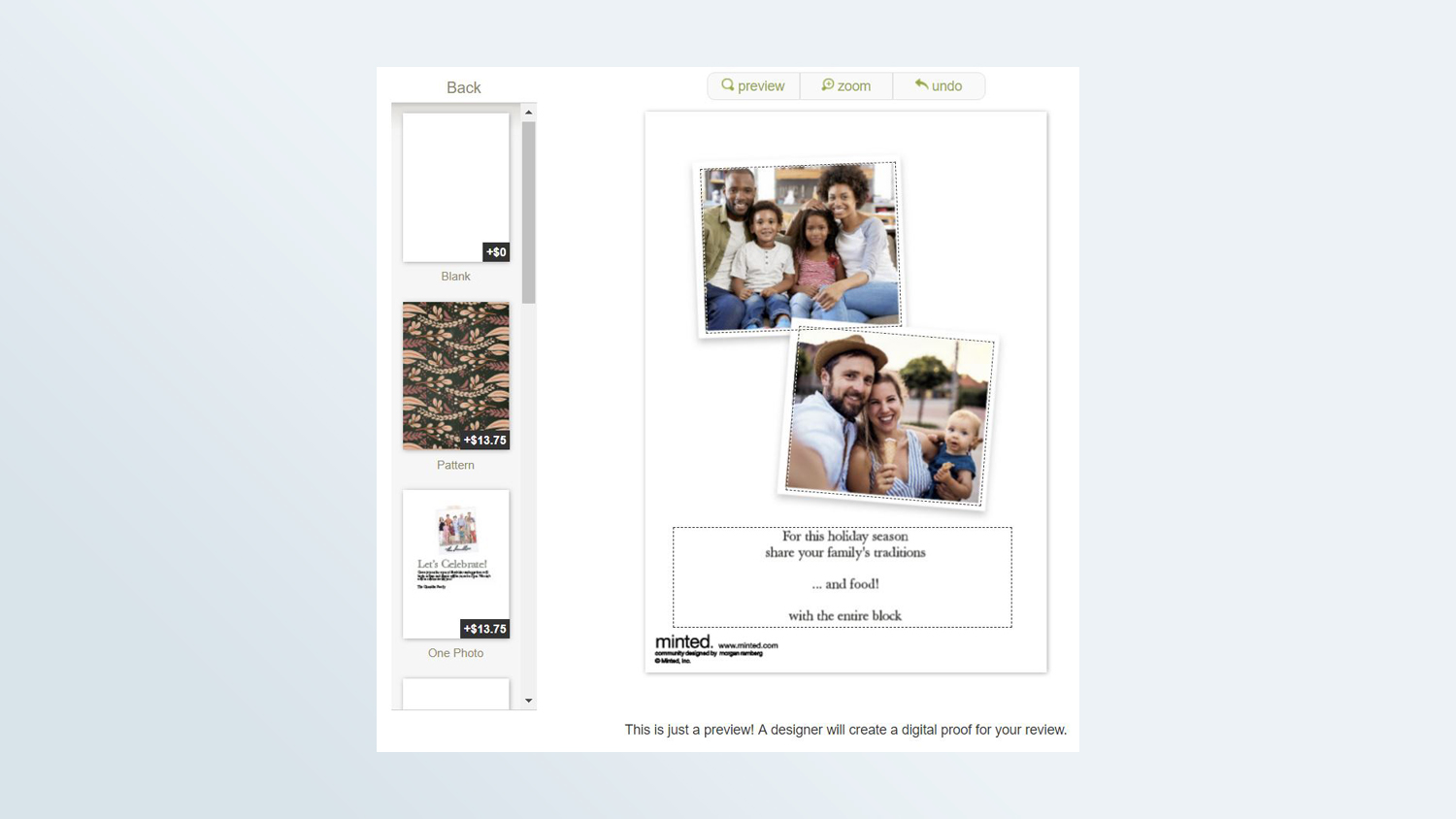
Ease of use
Because its software is so limited in what it allows you to do, Minted provides a quick workflow. However, while I was testing the service, the calendar software had a reported but unresolved bug.
Elegant artistry
Minted prides itself in using independent artists to design its templates. I found the nice variety of cards and calendars to be quite stylish, and many are beautiful. I guess it makes sense that Minted doesn't allow users to mess with their designs, though I found that frustrating.
Free calendar
By entering 10 dated occasions into the calendar interface, I received my first calendar for free (plus shipping).
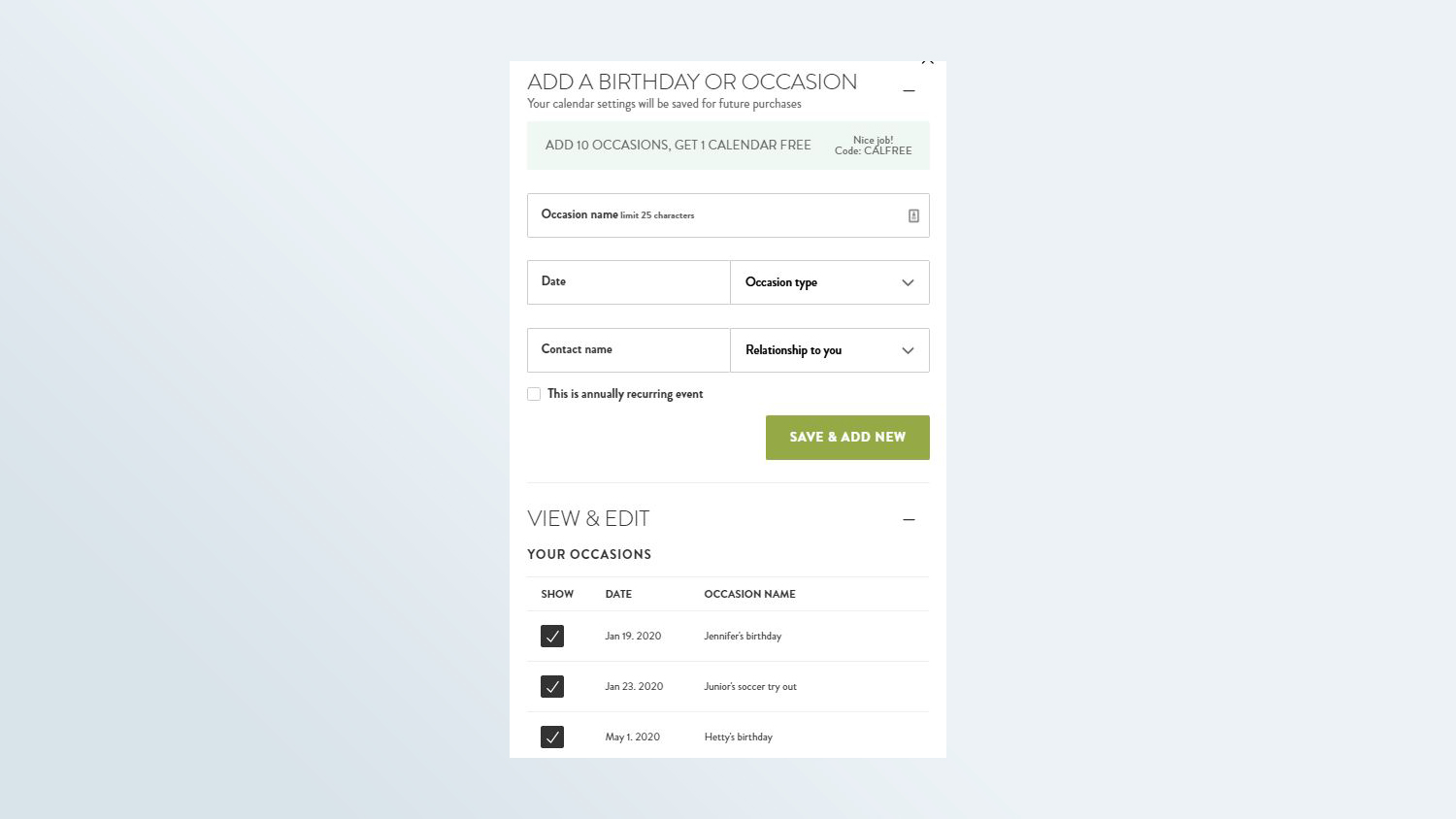
What I disliked
Limited creativity
Like Artifact Uprising, Minted's software has few options. Minted has no clip art, alternate backgrounds, borders, drop shadows or similar resources. And almost all the elements in the design templates are fixed.
Minted's software doesn't give the user much opportunity to personalize a project. For instance, in the calendar interface, photo place holders are fixed, and the only text you can add is in the calendar grid, at a set size, color and font.
MORE: The Best Photo Book Printing Services 2019
Still, Minted is slightly more flexible than Artifact Uprising. In the calendar interface, I had the option of three photo layouts for the interior pages (one, two or three photos). Plus, I could choose from among three colors (gray, green or blue) for the calendar grid. The card interface allowed me to delete and move (but not add) text boxes) and to choose from among several designs for the back. (However, those additional designs cost extra.)
Minted's very basic photo-edit tools are nearly identical to AU's: two filters (sepia or black & white); autocorrect; and rotate, zoom and pan within the place holder. However, Minted doesn't have AU's brightness slider.
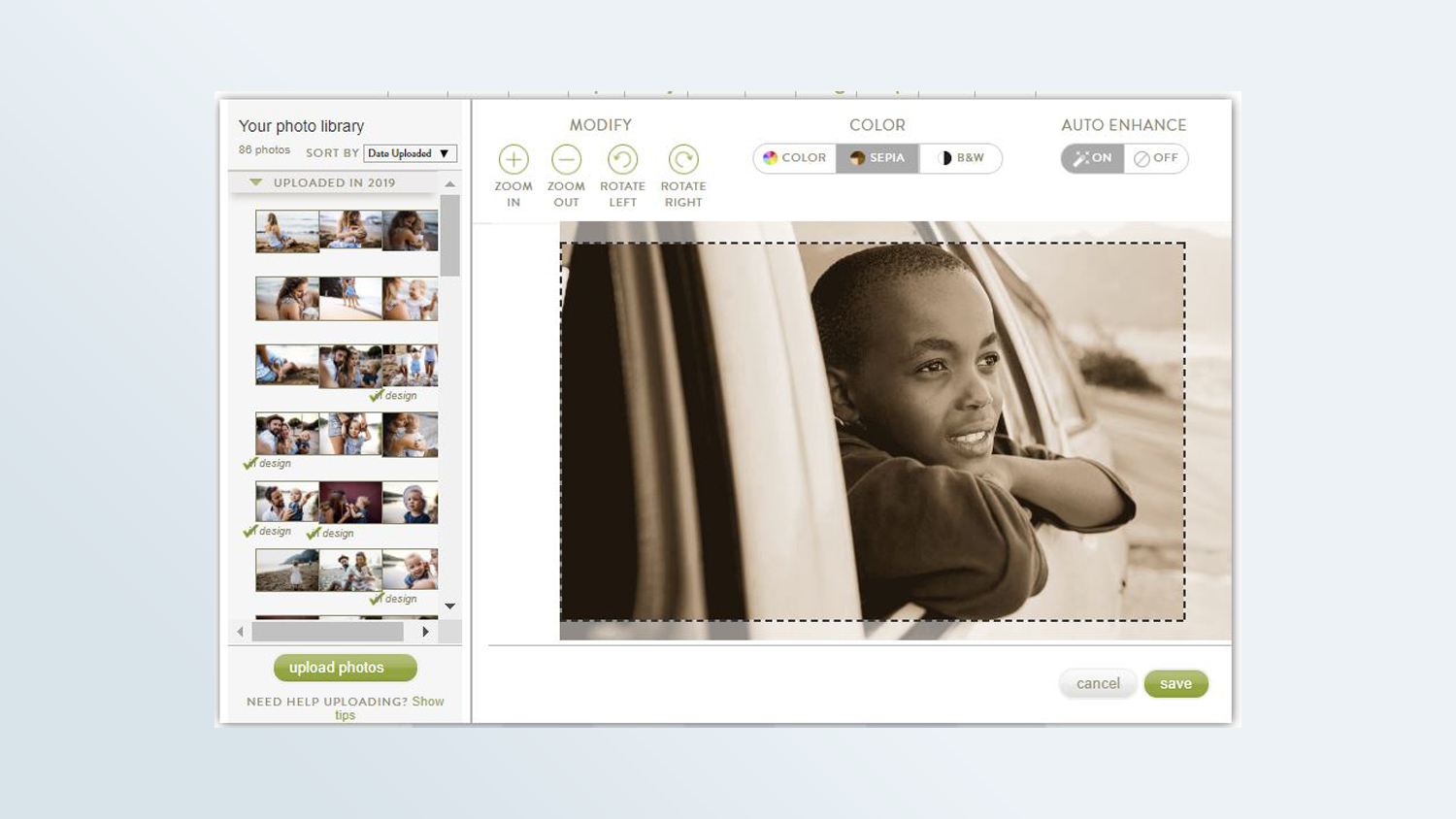
The printed projects
Like Artifact Uprising's products, Minted's elegant card and calendar are a delight to hold and touch. The off-white, high-quality card stock that Minted uses has a lovely warm tonality.
The calendar
Minted's calendar was printed on beautiful card stock with a nice weight and matte texture. Unfortunately, while the photos' exposure and midtone colors were generally good, their dynamic range tended to be flat with diminished highlights and blocky shadows. In addition, the pictures weren't sharp. The text that I added to the calendar grid was nicely formed but in a soft gray that doesn't stand out.

The card
Printed on a lovely matte card stock like the calendar, the card's photo reproduction was better. The pictures have good clarity, contrast and details in the shadows. The colors were well balanced for the variety of skin tones. Type was very clean, sharp, crisp and solid.
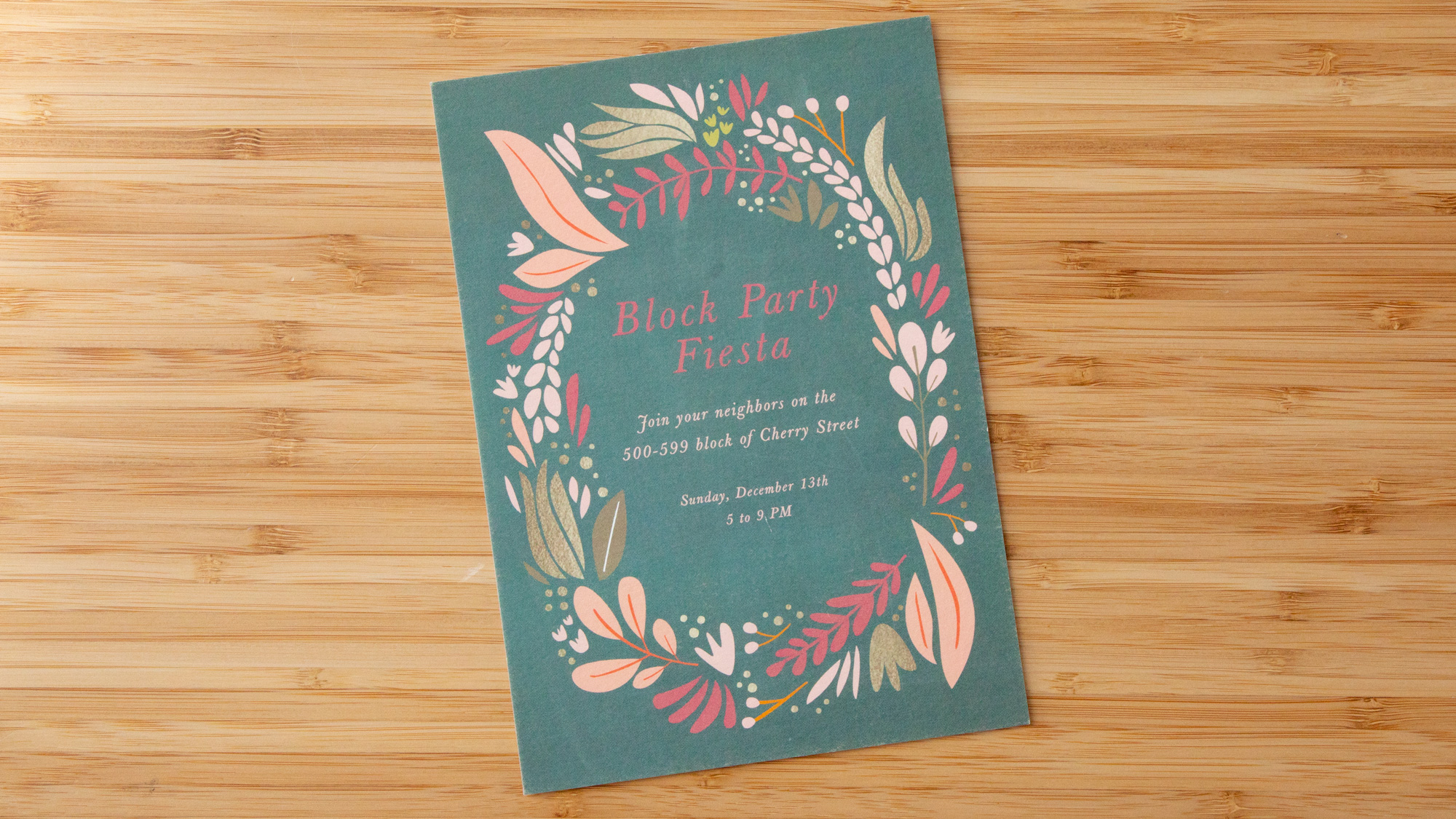
Pricing and options
My Minted 8 x 11.5-inch wall calendar is priced at $29. However, I paid only shipping. That's because the first calendar was free, with a list of 10 event dates to be input into my calendar (and saved for my future calendars). Minted gave no indication when, if ever, that free offer will end. The only other size of calendar is an 11.5 x 14-inch version that costs $39.
MORE: Best Family Calendar Apps
Minted's cards are quite expensive. My 5 x 7-inch card cost $3.40 each for 10 cards. The greater the quantity ordered, the lower the per card cost. For instance, 100 cards would have been $1.50 each. White envelopes are included. For $2 each, I could have ordered speckletone kraft or silver envelopes. Designed liners for the envelope that coordinate with the template cost $12.25 for 15. For $13 per 15 envelopes, you can have your return address on the back, with a choice of numerous attractive designs or a variety of standard fonts. In addition, recipient addressing (using the same designs and fonts) is currently included.
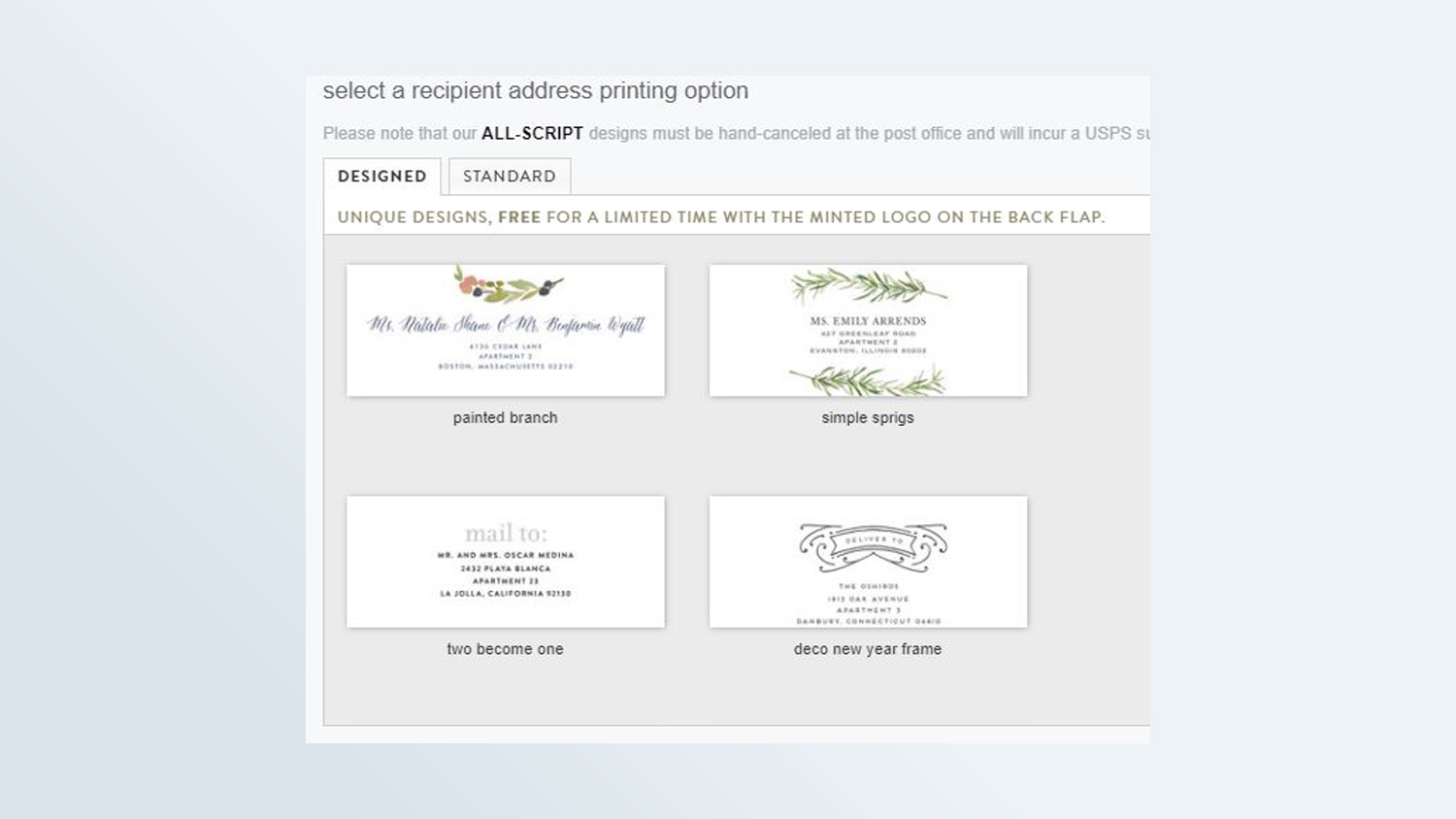
Many of Minted's other offerings are artist-designed stationery and gift items that aren't photo products, such as school supplies (name and clothing labels, notebooks and planners, and kids' stationery), fine-art prints (by Minted's various independent artists) and fabric gifts (aprons and mitts, pillows and throws, etc.).
Bottom line
Minted's photo calendar and card (like Artifact Uprising's) are impressive and expensive. If you want an elegant wall calendar and don't care about price or personal creativity, go with Minted's calendar. But for a card of the same ilk, I suggest Artifact Uprising's less pricey offerings. On the other hand, for creative software that's fun to use, lovely photos and nice-quality photo products that are less expensive, use Mixbook.
Sally Wiener Grotta is the president and lead analyst of DigitalBenchmarks test lab (www.DigitalBenchmarks.com). The scripts she created for various tech publications for testing and evaluating digital cameras, image quality, software and related technologies have become industry standards. Among her numerous books is the first major volume on image processing “Digital Imaging for Visual Artists” (McGraw-Hill), co-authored with Daniel Grotta. Her hundreds of reviews, stories and columns have appeared in scores of magazines, journals and online publications.


